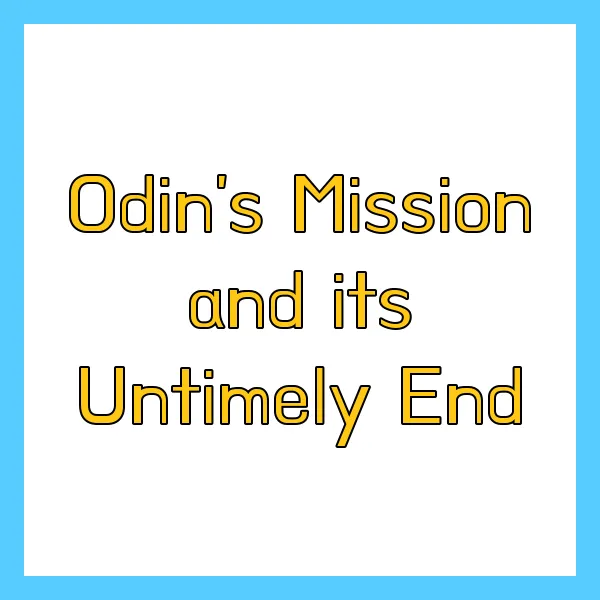
The ambitious dream of asteroid mining has suffered a major setback. AstroForge's Odin spacecraft, launched earlier this year, has been lost in space, approximately 300,000 kilometers from Earth. This incident raises serious questions about the feasibility of commercial asteroid mining and highlights the formidable challenges of deep space exploration. This post delves into the mission's failure, examining the technical issues and exploring the implications for the future of space resource utilization.
Odin's Mission and its Untimely End

Odin's objective was straightforward yet groundbreaking: scout asteroid 2022 OB5 for valuable platinum-group metals. This mission was a crucial first step in AstroForge's plan to harvest resources from asteroids, a concept straight out of science fiction! Launched aboard a SpaceX Falcon 9 rocket on February 26th, the initial stages of the mission appeared promising. However, the optimism was short-lived.
The Communication Breakdown: A Cascade of Errors
Just hours after launch, a series of unfortunate events unfolded, ultimately dooming the mission. First, a critical antenna polarization error prevented effective communication with ground control. Imagine – a tiny misalignment with potentially catastrophic consequences! This initial failure set off a chain reaction. The spacecraft, unable to receive commands, drifted silently for a crucial four-hour window, its fate unknown. Then, a brief 13-second signal, detected by a network of amateur satellite trackers (talk about citizen science!), revealed a further complication: Odin was tumbling . This slow rotation, later confirmed visually by Intuitive Machines' Athena spacecraft, further hampered communication efforts. As if things weren't bad enough, AstroForge's own uplink signal interfered with Odin's faint transmissions. It was like trying to whisper sweet nothings in a hurricane – utterly futile! The combined effect of these anomalies proved insurmountable.
Technical Challenges and Lessons Learned

Space is hard. This isn't news to anyone in the space industry, but Odin's failure serves as a stark reminder of the unforgiving nature of deep space operations. The antenna polarization error , a seemingly minor technical glitch, highlights the importance of rigorous pre-flight testing and redundant systems . The signal interference issue underscores the complexity of communication protocols in the vastness of space. And the slow tumbling , while not immediately fatal, likely contributed to power generation instability and further complicated communication attempts.
Implications for AstroForge and the Future of Asteroid Mining
The loss of Odin represents a significant financial blow to AstroForge. Developing and launching a spacecraft is an expensive endeavor, and the loss of both the spacecraft and the anticipated scientific data is undoubtedly a setback. Moreover, this failure has ripple effects. The subsequent Vestri mission, designed to actually extract resources from an asteroid, will likely face delays and require significant revisions based on the lessons learned from Odin's demise.
The Bigger Picture: Asteroid Mining and Space Resource Utilization

Despite this setback, the dream of asteroid mining persists. The potential rewards – access to vast quantities of valuable resources – are simply too enticing to ignore. Platinum-group metals , rare on Earth, are abundant in certain asteroids, promising to revolutionize industries from electronics to medicine. Asteroid mining also holds the key to sustainable space exploration, providing resources for in-space manufacturing and propellant production, reducing our reliance on Earth-based supplies.
Navigating the Challenges: A Path Forward
The path to asteroid mining is fraught with challenges, both technical and logistical. Odin's failure underscores the need for robust spacecraft design, redundant communication systems, and advanced autonomous navigation capabilities . Future missions will need to incorporate sophisticated fault tolerance mechanisms and robust contingency plans to address unforeseen circumstances. The development of standardized communication protocols and improved ground station infrastructure will also be crucial for ensuring reliable communication with distant spacecraft.
AstroForge's Resilience and the Future of Space Exploration

While disappointed, AstroForge remains committed to its long-term vision. The company recognizes that setbacks are inevitable in this pioneering field and views Odin's failure as a valuable learning opportunity. The lessons learned from this mission will undoubtedly inform future endeavors, paving the way for more robust and successful asteroid mining operations.
The Human Element: Perseverance in the Face of Adversity
The story of Odin is a testament to the human spirit of exploration. Despite the inherent risks and the inevitable setbacks, we continue to push the boundaries of what's possible, driven by a deep-seated curiosity and a desire to unlock the secrets of the universe. The quest for resources in space is not merely a scientific endeavor; it's a reflection of our innate drive to innovate, adapt, and overcome challenges. It's a testament to our resilience and our unwavering belief in the power of human ingenuity. While Odin's mission may have ended prematurely, it has illuminated the path forward, providing valuable insights that will ultimately bring us closer to realizing the dream of harnessing the vast resources of space. The journey is far from over, and the future of asteroid mining, though challenging, remains bright. Who knows what wonders await us among the stars? Only time, and continued exploration, will tell!
'NEWS > SCIENCE' 카테고리의 다른 글
| Palm Trees in Arctic Canada? Fossil Discovery Reveals Warm Eocene Past (0) | 2025.03.09 |
|---|---|
| Early Universe Water Discovery Life Possible Before Galaxies? (0) | 2025.03.08 |
| Scientists Create Woolly Mice in Mammoth De-Extinction Project (0) | 2025.03.07 |
| World's Largest Iceberg A23a Grounds Near South Georgia (0) | 2025.03.07 |
| Hofstadter's Butterfly Observed Breakthrough in Quantum Physics (0) | 2025.03.06 |